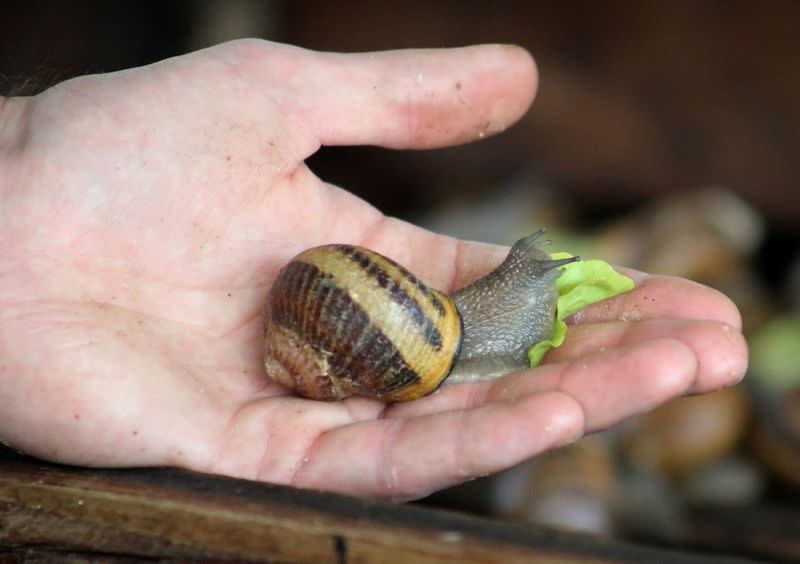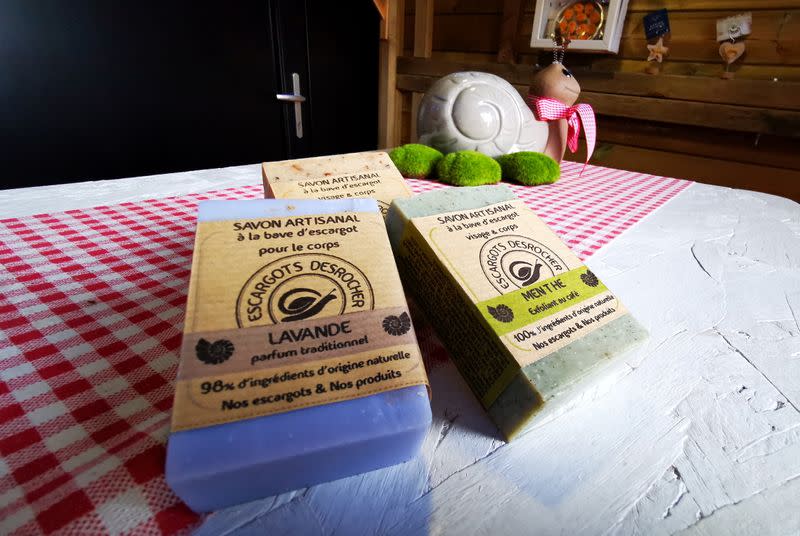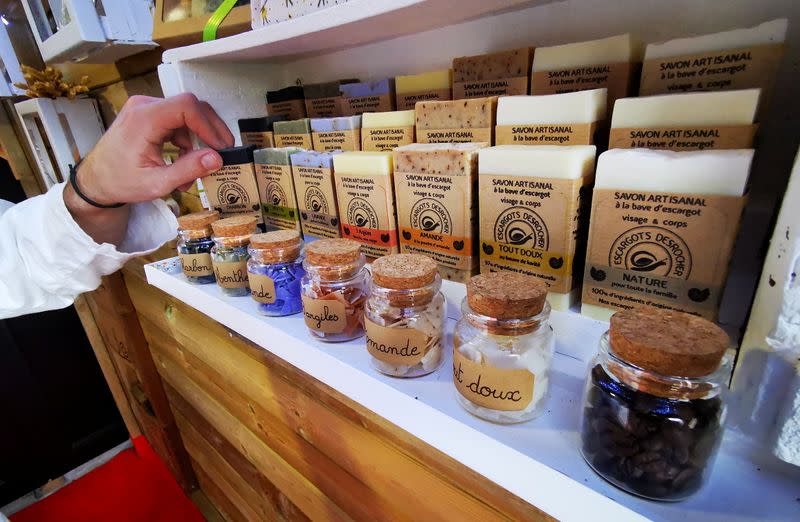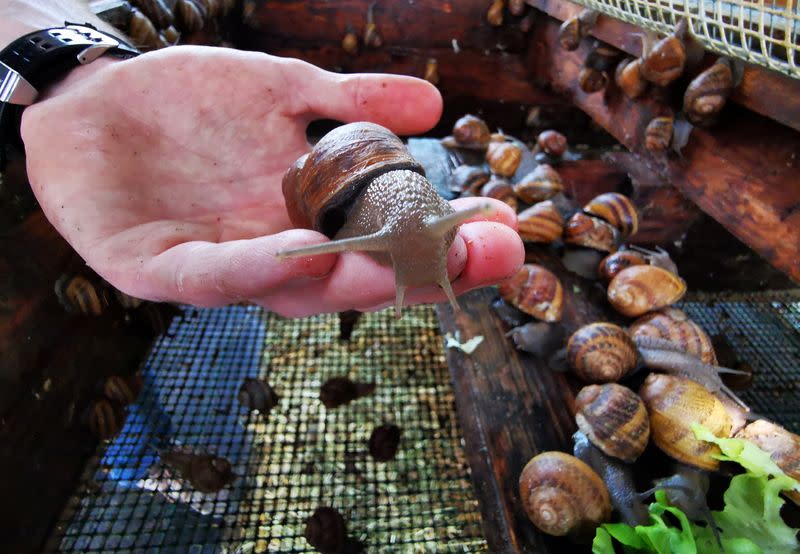Would you wash with snail slime soap?
By Ardee Napolitano
WAHAGNIES, France (Reuters) - Foamy slime bubbles onto Damien Desrocher’s hand as he lightly rubs one of the thousands of snails he keeps in an enclosure in his backyard.
The 28-year-old French artisan began using the gastropod fluid to make soap bars, which he sells in local markets, in December.
"It's all in the dexterity of how you tickle,” Desrocher said as he extracted the slime, noting that the process does not kill the animals. “I only touch it with my finger, you see it's not violent, it's simple."
A former air force computer technician, Desrocher decided to start farming snails in the northern French town of Wahagnies as a form of "returning to nature".
"Once you observe and see how snails behave, they're actually very endearing," he said. "It's really an animal that I love."
He has raised a total of 60,000 snails. As they enter their reproductive season, most are transferred to a larger site, while around 4,000 are kept in an enclosure at his home to harvest the slime.
A single snail will yield about 2 grams of slime, meaning he needs around 40 snails to produce 80 grams - enough to manufacture 15 100-gram soap bars.
“We need quite a lot of snails," he said.
Although quite uncommon in Western cosmetics, snail mucus has become a more common ingredient elsewhere, including in Korean beauty products, noted for its anti-aging properties.
Desrocher said slime contained molecules of collagen and elastin, which have anti-aging and skin-healing properties. Snails also naturally use their slime to repair their shells if damaged, he said.
Desrocher said he aims to produce 3,000 snail slime soap bars in his first year of production.
(Reporting by Ardee Napolitano; Editing by Richard Lough and Alison Williams)





